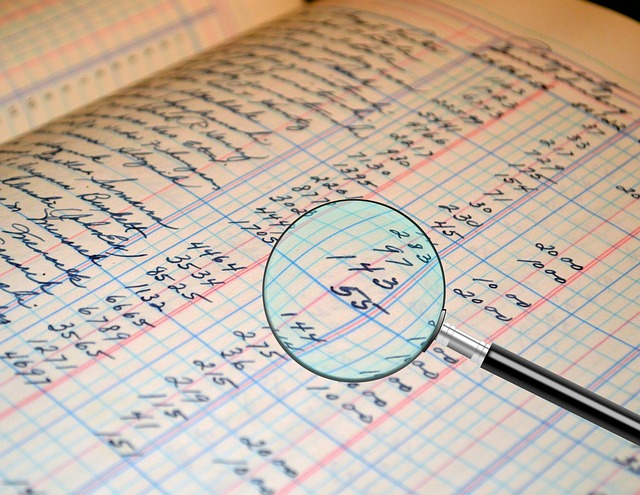What is Accounts Payable?

Accounts payable (AP or A/P) is a liability account that tracks the money a company owes to its vendors and suppliers. It’s like keeping tabs on your IOUs, but for businesses. This account helps in maintaining accurate records of all outstanding payments.
Keeps Track of Outstanding Payments: When a company purchases goods or services (office supplies, for example) from vendors or suppliers, they don’t always pay immediately. Instead, they may agree to pay at a later date. Accounts payable keeps track of these outstanding payments so the company knows how much money they owe to whom and when it’s due.
Streamlines Payment Procedures: Efficient accounts payable processes are essential for smooth financial management. By using accounting software, companies can streamline their payment procedures. This means they can easily keep track of invoices, make payments on time, and avoid late fees or penalties.
Ensures Timely Payments: Nobody likes waiting for their money, right? The same goes for vendors and suppliers who have provided goods or services to a company. Accounts payable ensures that payments are made on time, helping maintain good relationships with vendors and avoiding any disruptions in the supply chain.
What is Accounts Receivable?

Accounts receivable refers to the money customers owe to your business for goods or services provided on credit. It’s a list of future revenue due to come into your business and gets recorded as a current asset account.
It is crucial in financial management as it directly impacts a business’s cash flow. Managing accounts receivable effectively ensures timely customer collection, which is essential for maintaining positive cash flow.
Keeps Track of Money Owed and Payment Reminders: One of the critical aspects of managing accounts receivable (AR or A/R) is tracking and monitoring money owed to your business. By keeping a close eye on AR, businesses can identify potential bad debts and take appropriate actions to mitigate any financial risks. This includes following up with customers who have outstanding payments, sending reminders, or even taking legal action if necessary.
Managing Assets and Liabilities: Tracking accounts receivable also helps businesses understand their current assets and liabilities more accurately. Accounts receivable is considered a current asset because it represents the money that will be received within a short period. On the other hand, when customers fail to pay their dues on time, it becomes a liability for the company.
Maintaining Customer Relationships: In addition to maintaining cash flow and managing liabilities, effective accounts receivable management also contributes to building strong customer relationships. By ensuring timely collection of payments, businesses can establish trust and reliability with their clients.
What are the key differences between Accounts Payable vs Accounts Receivable?

A company’s accounts payable and accounts receivable may sound similar, but they have distinct roles in a company’s financial management. Let’s take a closer look at the critical differences between the two.
Accounts Payable: Money Owed by the Company
Accounts payable refers to money a company owes to its suppliers or vendors for goods or services. It represents the company’s liabilities, meaning money needs to be paid back. When a company receives goods or services from a supplier but hasn’t made payment yet, it falls under accounts payable.
- Companies keep track of their accounts payable through invoices received from suppliers.
- Payments for accounts payable are typically made within an agreed-upon timeframe, known as payment terms.
- Accounting software is often used to manage and track accounts payable efficiently.
Accounts Receivable: Money Owed to the Company
In contrast, accounts receivable represents the money customers owe to your business for goods or services provided. It acts as an asset for the company since it expects to receive payment in return for its products or services.
- Companies generate invoices and send them to customers for payment.
- The process of receiving customer payments is known as the accounts receivable process.
- Bookkeepers or accounting departments keep track of outstanding invoices and follow up with customers who haven’t made payments yet.
The key difference between accounts payable and accounts receivable lies in their nature: accounts payable is a liability account, while accounts receivable is an asset account. While one represents money owed by the company, the other represents money owed to the company.
How do AP & AR impact Effective Financial Management?

Understanding the differences between accounts payable and accounts receivable is essential for effective financial management. Finance teams and business owners need a clear understanding of these concepts to maintain accurate financial records.
Let’s explore why recognizing these distinctions is crucial.
Proper Cash Flow Management
Managing AP and AR contributes to healthy cash flow within an organization. Accounts payable refers to money a business owes suppliers or vendors for goods or services received but not yet paid for. On the other hand, accounts receivable is money owed to a company by its customers or clients for products sold or services rendered.
By effectively managing both sides, businesses can ensure they have enough funds available to pay their bills while also collecting payments from their customers promptly. This helps maintain a positive cash flow, which is vital for the smooth operation of any business.
Informed Decision-Making
Recognizing the distinctions between accounts payable and accounts receivable enables informed decision-making regarding payment terms, credit policies, and supplier/customer relationships. For example:
- Payment Terms: Understanding how long your customers take on average to pay you can help determine appropriate payment terms when dealing with suppliers.
- Credit Policies: Knowing your customers’ payment history allows you to establish credit policies that minimize the risk of late or non-payment.
- Supplier/Customer Relationships: Recognizing your company’s payment patterns can help build stronger relationships with suppliers who offer favorable terms, discounts, or incentives.
With this information, businesses can make strategic decisions that benefit their financial health and overall operations.
How do I properly Record Accounts Receivable and Accounts Payable?
Properly recording accounts receivable and accounts payable is crucial for accurate financial records. It helps businesses keep track of the money they owe and the money owed to them.
Accrual Accounting is Key
Accrual accounting is commonly used. This means you record revenue when earned, not when payment is received. For example, if you provide a service to a customer in January but they don’t pay until February, you would record that income in January.
The payables process
To properly record accounts payable, follow these steps:
- Receive an invoice: When you receive goods or services from a vendor, they will send you an invoice stating what you owe.
- Record in your books: Make a journal entry crediting the liability account (accounts payable) and debiting the expense account.
- Track payments: As you pay your vendors, apply them to their respective invoices.
- Reconcile regularly: Regularly reconcile your accounts payable with your bank statements to ensure accuracy.
Accounts Payable Example:
Imagine you run a small business that sells handmade jewelry. One day, you receive an invoice from your supplier for a batch of gemstones you ordered but haven’t paid for yet. This invoice represents an account payable because it is an amount you owe your supplier for the goods received.
The Receivables Process
To properly record receivable accounts, follow these steps:
- Create an invoice: When you provide goods or services to a customer, create an invoice detailing what was provided and how much they owe.
- Record in your books: Make a journal entry debiting the account receivable and crediting the revenue account.
- Track payments: As customers pay their outstanding balance, apply them to their respective invoices.
- Reconcile regularly: Regularly reconcile your accounts receivable with your bank statements to ensure accuracy.
Accounts Receivable Example:
Suppose one of your regular customers purchases a necklace from your store but pays on credit instead of upfront. In this case, you would create an invoice for the customer, indicating the payment terms and due date. Until they make the payment, this becomes an account receivable for your business.
By following these processes and utilizing accounting software, you can effectively record and manage accounts receivable and accounts payable. This will help you maintain accurate financial records and ensure smooth financial operations for your business.
Frequently Asked Questions

Here are the most common questions about accounts payable vs accounts receivable.
How can I improve my Accounts Payable process?
Streamline your accounts payable process by implementing electronic invoicing systems, setting up clear payment terms with suppliers, regularly reconciling invoices with purchase orders and receipts, and leveraging technology such as automated payment software.
What strategies can I use to Improve Accounts Receivable?
To minimize outstanding accounts receivable, establish clear payment terms upfront, send timely invoices with accurate information, follow up on overdue payments promptly through reminders or collection efforts, and offer incentives for early payment or penalties for late payments if appropriate.
In addition, you can consider invoice factoring. This process involves selling your unpaid invoices for an immediate cash advance.
Is there software available to help manage both AP and AR?
Yes, there are various accounting software options available that provide comprehensive solutions for managing both aspects efficiently. Some popular choices include QuickBooks Online, Xero, FreshBooks, and Zoho Books.
Accounting Software Pros & Cons

Pros:
- Automate the process of recording and tracking accounts payable and AR transactions.
- Ensure that AP and AR records are accurate.
- Centralized platform for managing AP and AR.
- Provide insights into cash flow, aging of receivables, and vendor payment history.
- Prepares financial statements such as an income statement or cash flow statement.
- Many accounting software solutions integrate with other business systems.
Cons:
- Can be expensive, especially for small businesses with limited budgets.
- May require training and time for employees to familiarize themselves with the system.
- Accounting software can experience technical glitches or compatibility issues.
- May have limitations when it comes to customization.
Accounts Payable vs Accounts Receivable Explained – Final Thoughts

To summarize, accounts payable is money your business owes to suppliers or vendors for goods or services received on credit. It’s recorded as a liability on the balance sheet.
On the other hand, accounts receivable represent the funds owed to your company by customers or clients for products sold or services rendered. It’s recorded as an asset on the balance sheet. Both aspects are crucial for maintaining a balanced financial ecosystem within your organization.
Now that you have this knowledge, it’s time to put it into action. Review your business’s finances and identify areas where you can optimize your accounts payable and accounts receivable processes. Doing so will enhance cash flow, improve relationships with suppliers and customers alike, and ultimately drive success in your venture.
Contact us if you have more questions about accounts payable vs accounts receivable or to apply for a small business loan. Our alternative funding experts can help you find financing solutions for your business goals.











